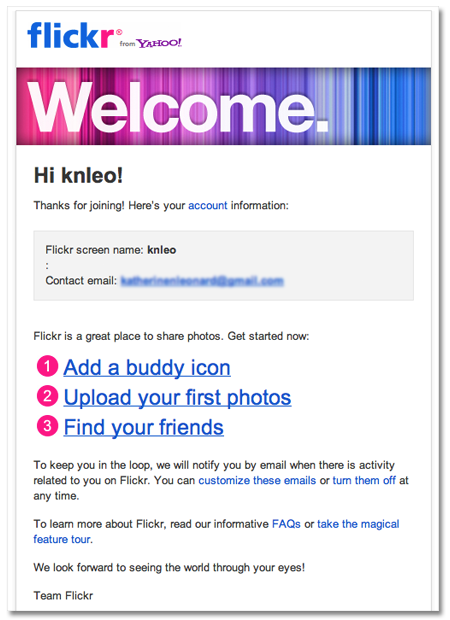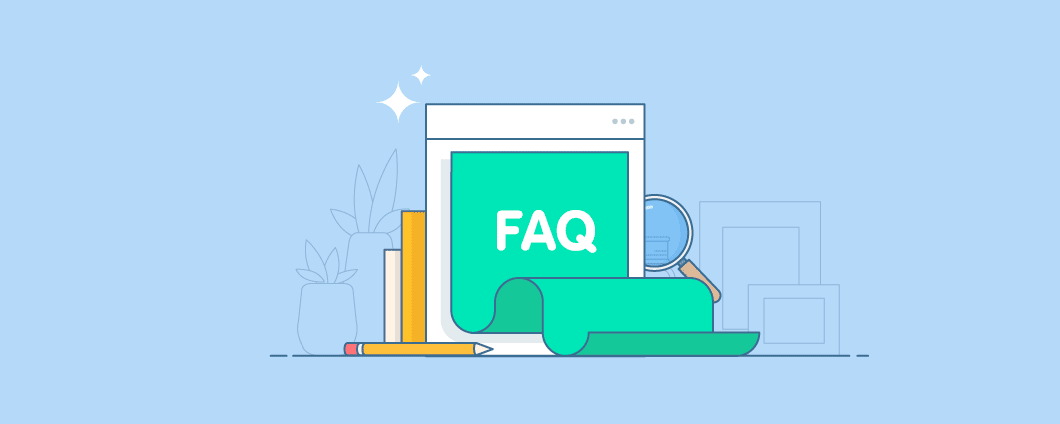Now, more than ever before, customers are looking for
In fact, research shows that 90% of consumers now expect a brand or organization to offer a
This is one reason a FAQ page is a good idea.
By creating a resource with commonly asked questions and answers, you can cut down on customer service costs and empower your online shoppers to find the information they need to complete a
Let’s look at the nuts and bolts of how to create a stellar FAQ page that’s a powerful resource for customers.
What is a FAQ Page?
FAQ (frequently asked questions) pages are helpful resources that help answer common customer questions. Essentially, they work to help overcome obstacles to purchase by addressing some of the repeated questions and concerns past customers have inquired about through support resources.
Take a look at the FAQ page we’ve created here at Ecwid as an example:

Notice how these common questions are clickable and can be expanded to reveal an
Ultimately, the goal of an FAQ page is to educate shoppers. By providing insightful answers to FAQs, your customers can more quickly and efficiently get on their way to the next step in the sales journey.
Additional Benefits of FAQ Pages
Next, let’s explore some of the added benefits of FAQ pages and how they can improve your online store as a whole.
SEO & PPC
Because answers to customer questions are often packed with relevant keywords, FAQ pages can be valuable SEO and PPC assets.
When worked in naturally, these
Authority
Showcasing your knowledge of customer concerns on an FAQ page is also a great way to build authority as a leader within your niche. If you can provide helpful content that educates readers on the topic related to your store, it shows that you are a trustworthy source of information related to your products and target audience.
Rapport
FAQ pages also help act as a form of proactive customer service that anticipates the customer’s needs before they even have to ask for help. A resource like this builds rapport with the target audience by showing just how well you know and understand the needs of the customers coming to your website.
Now that we know the benefits of a FAQ page, let’s look at some best practices for creating one of your own.
Best Practices: What to Include on Your FAQ Page
By following these tips, you can create a FAQ page that’s helpful, thorough, and exactly what your customers need.
Make a list of the common questions you’re emailed about. The first step is to look at some of the common questions you get through your website and make a running list of some of the more common questions. From here, prioritize your list of questions, starting with the most frequently asked question and working your way down.
Ask your customer support team (if you have one) what they most commonly get questions/complaints about. If you use external support for customer service, reach out to that provider to get their perspective on your customers’ most common questions and concerns. Since they’re working with your shoppers on a regular basis, they’ll be an excellent source of information for this page.
Think about common objections to purchase that keep shoppers from checking out. You’ll also want to take some time to consider some of the common obstacles to purchase your customers may be facing, and then think about how you can help them overcome those objections to purchase. This might be things like uncertainty around your return policy, questions about sizing, quality, or delivery times. Provide as much detail as you can to provide
A good example of this can be seen on LuJeanik’s page, where they include detailed policies:

Use photos/screenshots when possible to illustrate

Cakesafe gives detailed answers to their FAQs in attached PDF files that make
Use simple language in an informative tone to provide clear/sufficient information. Last, but not least: Remember to use simple language with an informative tone. Don’t use jargon or lingo that your readers won’t

Decadence Delivered executes the informative tone very well in their FAQs. The language is simple, easy to read, and without fluff or
Where to Put Your FAQ
Here are a few tips and suggestions that will make your FAQ page easy to find and use.
Top/bottom navigation
One place to include navigation to your FAQ page is at the top and/or bottom of your website. Placing links here make it fast and easy to get to this resource without having to do much digging. Here’s an example of this from Sheakardel:

In Ecwid, you can create a FAQ page (as well as other legal pages) and put them to the bottom of your store. Simply go to Control Panel → Settings → General → Legal Pages and set them up. You can add all kinds of media to these pages, including videos, pictures, and links.

Product pages
Including a few FAQs or a link on product pages makes it easy for shoppers looking at products to quickly get answers to questions that arise during the shopping process. Here’s how FlowMovement does this:

Contact page
Remind shoppers to check out this handy resource before reaching out to support. It will save both parties time and energy if the shopper can
Online Bikini Shop includes their FAQs on the contact page to remind shoppers to check here before reaching out to support:

Welcome newsletter
Get new customers familiar with your FAQs by including a link to this page in your welcome newsletter or welcome email. Again, this is a proactive approach that helps you anticipate customer needs.
Photo sharing site Flickr does this to help new users get up to speed:

Order notification email
If you send automated transactional emails that send after a purchase is made, you can include a link to your FAQ page here to address questions about delivery time, order turnaround, etc. This helps cut down on inquires related to order fulfillment and keeps the buyer in the know.
Nordstrom puts a link to their FAQs right at the top of the order confirmation emails they send:

Having your FAQs in these different spaces helps insure your customers have access to answers whenever and wherever they need them.
Create Your FAQ Page Today
By creating a resource that empowers your customers to solve their own problems and answer their own questions, they can more quickly complete the purchase journey and be on their way to checkout.
Don’t make your shoppers wait for an
- Content Marketing 101
- How to Promote Your Online Store With Content Marketing
- How to Write an “About Us” Page
- Why You Need a FAQ Page
- How to Get Started with Storytelling for Your Brand
- How to Use Viral Content to Sell Products Online
- Using the Psychology of
Decision-Making in Sales Content Optimization








